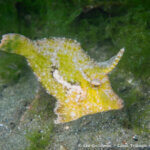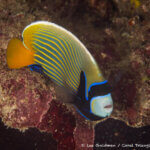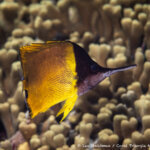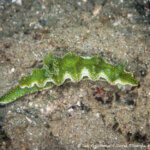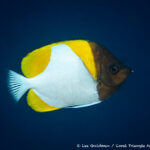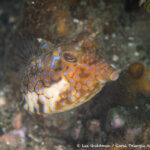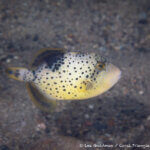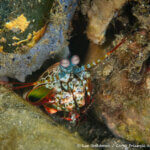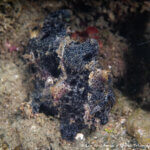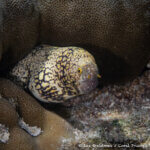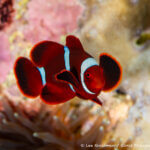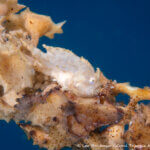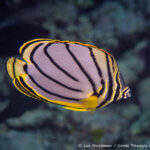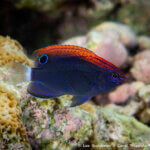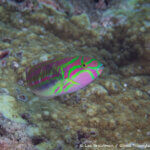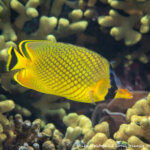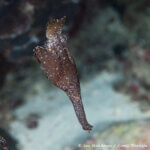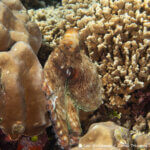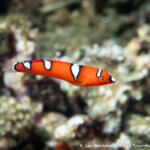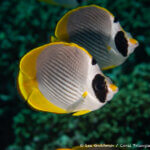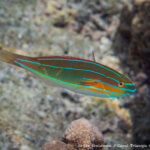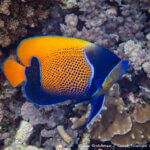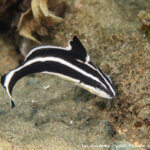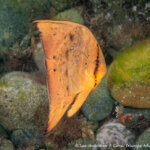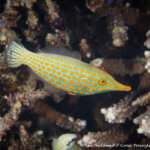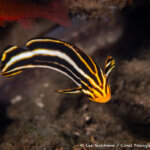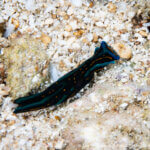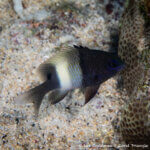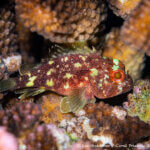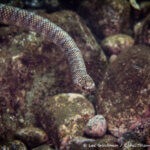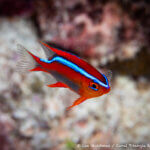
Banda Islands 2023 Trip Report
Banda Islands 2023
It had been over five years since our last trip to the Banda Islands and it was too long to have been away! The remote island archipelago possesses ten islands, some volcanic and some limestone, surrounded by the clear, blue waters of the Banda Sea. And while the islands have a reputation for its history revolving around nutmeg, it is the reefs that captured our attention from the moment we put our heads in the water around Pulau Run.
Nusa Laut
I am jumping ahead of our first day though. We began our snorkeling journey along the exposed seaward reefs of Nusa Laut, an island to the south of Seram and east of Ambon. Coral richness and diversity began right from the surface and the reefs support a ton of fish from damselfishes and anthias to large travally, groupers, and sharks. In the afternoon, we snorkeled volcanic black sand and saw many nudibranchs and juvenile fishes. I love black sand because the colors of fish and inverts seem to pop more against the dark background.
Pulau Run
After a full overnight cruise over flat calm seas, we arrived at Pulau Run, famous for the important role it played in negotiations between the Dutch East Indies trading company and the English who occupied the island at the time. Ultimately, the trade between the two European powers resulted in the acquisition of the Island of Manhatten and parts of main land New York by the English for ‘rights’ to the island of Run granted to the Dutch. Hundreds of years later and our only real concern was what way the current was going along the northeast coast of the island. Steep drop-offs that began in a just a few feet of water attracted thousands of reef fish, including red-tooth triggerfish, unicornfishes, snappers, parrotfishes, and several large adult Napoleon wrasses.
Manuk
The promise of calm seas allowed us to make a side trip to the ultra-remote island of Manuk. Known for the large colonies of sea birds (Manuk mans bird in Bahasa Indonesian) it is also known as the island of snakes. The abundance of olive sea snakes on the reefs cannot be overstated. We saw dozens, and often two or three in one visual. With its isolation came regards; pristine reefs and robust populations of fish. We spent the entire day snorkeling the northwest fringing reefs and were treated to up close and personal looks and encounters with many of the sea birds that nest on the island.
Hatta
Another easy overnight cruise brought us to the eastern-most island in the Bandas, the island of Hatta. Our first of several snorkels began with a visit to the reefs along the southeastern part of the island where deep sandy slopes were littered with enormous coral bommies (an Australian term for large outcroppings of coral often independent from the main reef structure). In the afternoon, we snorkeled an. Extensive stand of very lush sea grass. Moray eels, nudibranchs, octopuses, and fish that associate with tidal flats and sea grass were all in abundance.
Banda Neira / Gunung Api
Our next stop was the ‘main’ islands of Banda Neira, Lonthor, and the volcano, Gunung Api. Lava Flow, is a particular favorite of mine, easily finding a spot on my top ten list of snorkel sites worldwide. Coral grows on top of the lava that flowed into the sea during the last eruption in 1988. While it killed most of the reef that was previously growing along the shoreline, new coral growth has arisen and it looks fantastic. Most of the coral community is made up of yellow Porites (perhaps P. cylindrica) but the diversity throughout the snorkel is amazing. In the end, it ended up being everyone’s favorite snorkel! We snorkeled it twice for that very reason.
Fort Belgica
In the afternoon, many of us visited Fort Belgica on Banda Neira as well as the museum and a small nutmeg plantation. In the evening, we had the chance to see the flamboyant mandarinfish and while they do tend to be secretive, they are easily spotted in the shallow habitat along the harbor’s breakwater. Males court females and right at sunset, both engage in pelagic spawning (male and female release egg and sperm to mix in the water column). In all of my experience snorkeling, Banda Neira is still the best place in the world to witness this magical event, and in just a few feet of water with many males and females to be seen. Our snorkel at Lonthor had some getting lucky to see a hammerhead shark and others, a sargassum frogfish!
Hatta redux
The next day we went back to Hatta Island to visit the northwest side of the island and the shallow reefs that fringes from the coast and then to Pisang where we had a great, but interesting snorkel. While the coral and fish seemed to be healthy, the water was unusually hot. Not warm, hot. My watch was showing a temperature in the mid 90s. Perhaps this is something that is usual for this island and corals have adapted, but there were times I had to swim away from the reef flat and into deeper water to get away from the hot tub-like environment.
Pulau Run return
Our final day in the Banda Islands was supposed to be Pulau Ai and then onto the northern most island of Suanggi, but a lightening-rich storm cell descended upon us and we switched over to Pulau Run. Another amazing snorkel at Run, this time beginning more westward along the wall. A pleasant drift along with thousands of reef fish made this a close second to everyone’s favorite snorkel.
Mamala Island
At CTA we do love the chance to explore and visited some new locations near Ambon. The first was Mamala Island where we snorkeled along the southern coastlines both east and west. Not knowing what to expect, we were welcomed with a shallow, coral-rich reef with a rugged coastline that provided a lot of different habitats. Among the rarer stuff to be seen were juvenile rock-mover wrasses and angelfishes, robust ghost pipefish, and plenty of nudibranchs and head shield slugs.
Ambon
The next day we snorkeled just outside of Ambon and then inside at a place called Laha. Laha is the type of environment that hosts a variety of crazy marine life and allows us to ‘critter hunt’ in shallow protected waters. We had plenty of juvenile sweetlips (a variety of species), fingered dragonets, snowflake moray eels, plenty of cardinal fishes, plenty of nudibranchs, and the highlight, a painted frogfish! All of this in less than 3-feet of water!
We will be back in the Banda Islands in 2025 as a major part of our Heart of the Coral Triangle snorkeling tour.! The islands are amazing and the snorkeling opportunities almost unparalleled. We are looking at dates in 2025, not necessarily soon enough for me though :)! Please take a moment to see some of the photos of the fish and critters we saw on our trip (below).


